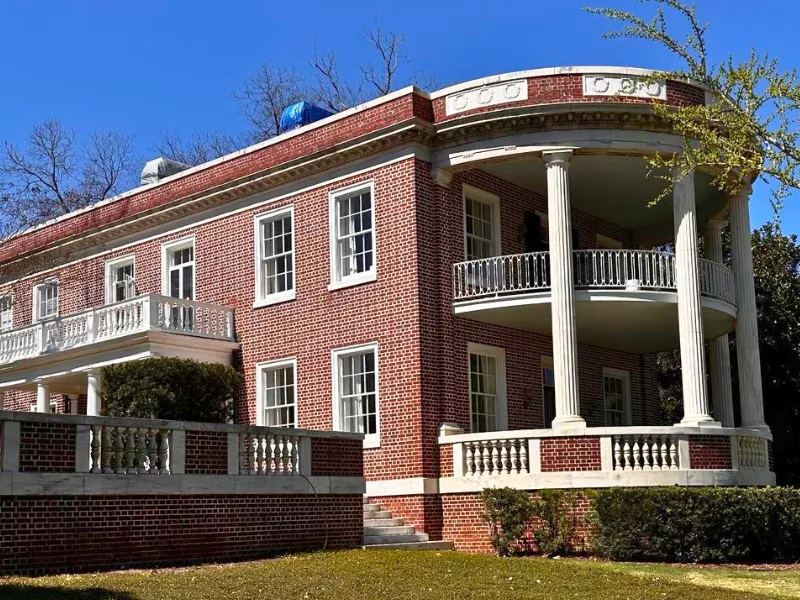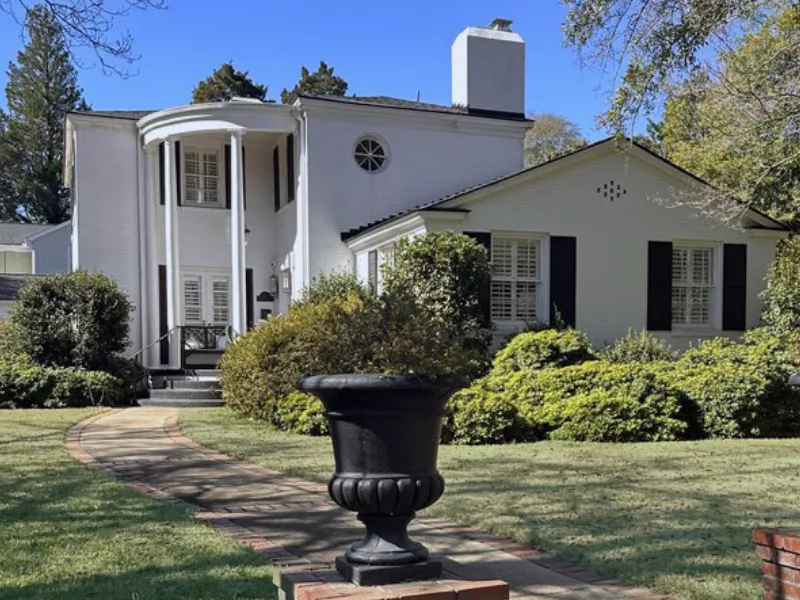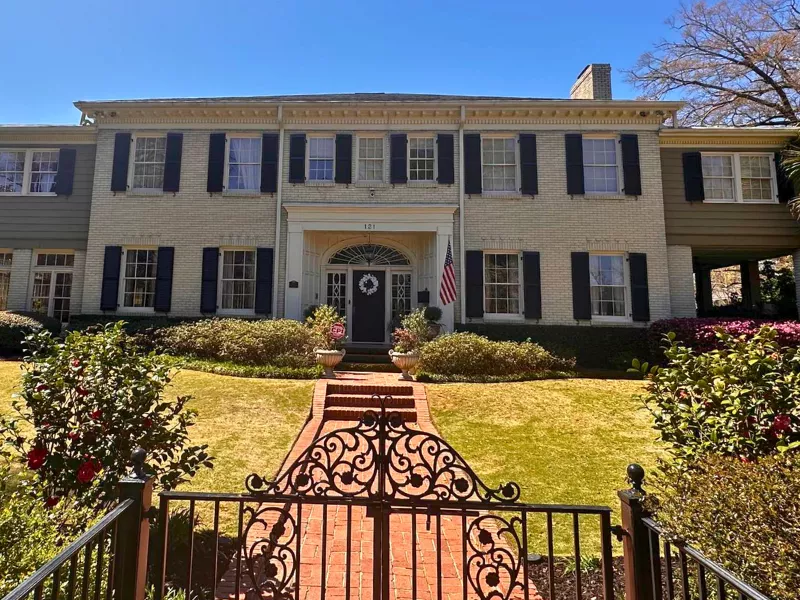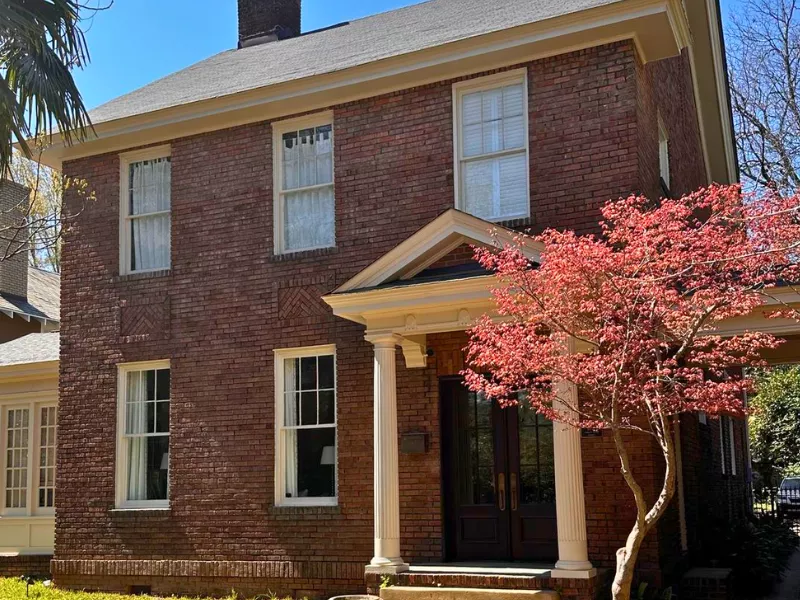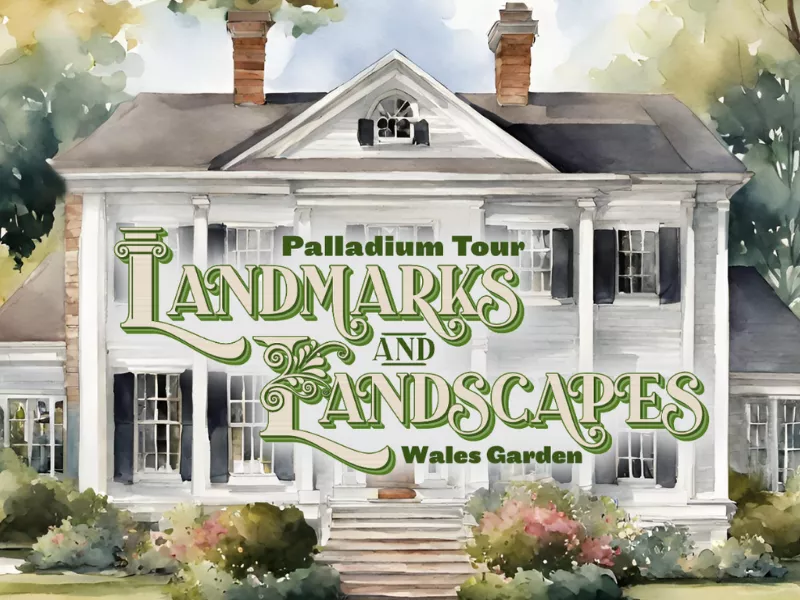1717 Enoree Avenue
2024 Palladium Tour: Landmarks & Landscapes
1717 Enoree Avenue
Built in 1923 for Eugene H. Marley, this residence is one of at least three homes in Wales Garden designed by Leila Ross Wilburn, a female architect from Atlanta, Georgia. Its deep, gabled front porch offers sheltered access to the house’s impressive front entrance—a nine-lite, Prairie style front door flanked by slender six-paned sidelights and crowned by a transom flanked by four-paned corner windows. While 1717 Enoree Avenue typifies the highly popular bungalow form of early twentieth-century residential architecture, the manner in which form and function elevate one another is a hallmark of Wilburn’s designs.
In late 1923, Eugene H. Marley (1888-1960) received a permit to construct his new residence, 1717 Enoree Avenue, at a cost of $3,500. At the time, Enoree Avenue was in the midst of a construction boom, with multiple builders and other owners completing residences between 1922 and 1925. Unlike the 1920s residences built on Saluda and Edisto avenues, most of these homes were Craftsman Style bungalows similar to those being built in Melrose Heights or Earlewood. Research into this residence, performed by Historic Columbia staff as part of a plaque project in 2019, identified the design as one published in architect Leila Ross Wilburn’s plan book Brick and Colonial Homes.
Wilburn (1885-1967) was a student of the Arts and Crafts movement, and her bungalow designs featured quintessential Craftsman style elements like 1717 Enoree’s heavy brackets, curvilinear exposed rafter tails, and windows that mix multiple pane top sashes over single-lite lower sashes.
After publishing her first plan book, Southern Homes and Bungalows, in 1914, Wilburn advertised it in newspapers across the region, including Columbia’s The State. Her pricing model ensured that an “architect-designed” home was within the financial reach of the middle-class, including Marley, who managed Haverty’s Furniture Company.
The design for Marley’s Craftsman style bungalow is a slightly modified version of Plan No. 138 in Wilburn’s 1920 Brick and Columbia Homes. For a fee, Wilburn modified plans to the builder or homeowner’s specification; in this instance, the original plan’s stucco is brick and shingle. In 1929, Wilburn’s Ideal Homes of Today offered the brick veneer version of this design as standard for the first time.
Just two years later, Eugene Marley and his wife, Coleen (1901-1992), sold 1717 Enoree Avenue to Dr. Wilburn Saye (1892-1962) and his wife, Carolyn (1895-1963). By then, the Marleys had built 1713 Enoree Avenue—likely from the same plan book as their previous residence. In fact, Wilburn’s designs, where were marketed as “especially adapted for the South,” are present across all other downtown Columbia neighborhoods, just waiting to be discovered.
After a series of owners, Stephen J. Koosa (1897-1986) purchased 1717 Enoree Avenue in 1945. Stephen, along with his 10 brothers and sisters, was a first-generation American born to Syrian immigrants Asa (1865-1937) and Laura Koosa (1874-1913). The family lived in Georgia during Stephen’s childhood and relocated to Columbia following Laura’s death in 1913. When he purchased this residence in December 1945 for $8,500, Stephen was working as an accountant.
Stephen never married, but his household included the family of his younger sister, Mary Koosa Knuckley (1898-1985), and briefly his niece, Frances Naccash (1925-2008), and his brother, Fred Koosa (1897-1974). The home remains in the Naccash family today, with many original details carefully maintained or restored.





